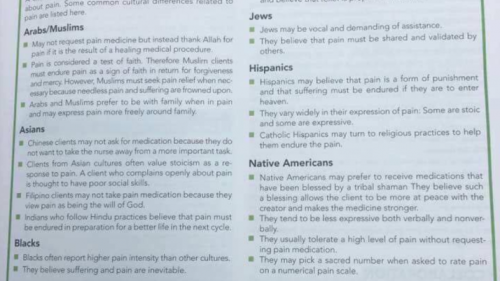With the release of the Culturally Responsive Curriculum Scorecard, parents, community members, educators, and organizers can find out whether curriculum in their schools is culturally responsive or culturally destructive. This is a much-needed resource that adds to an emerging toolbox to measure culturally responsiveness in the classroom.
Curriculum plays an essential role in students’ lives, not only because it serves as a tool for their learning and growth, but because it influences how students understand the world and locate themselves within it. The stories told, history shared, and worldviews deemed worthy enough for exploration, contribute to the centering and normalization of certain people, cultures, and values. Curricula that only reflect the lives of dominant populations — for example, White people and culture, nuclear families, or able-bodied people — reinforce ideas that sideline students of color, linguistically diverse students, single parent/multi-generation/LGBTQ+ families, and differently-abled people. Culturally responsive curricula are necessary for culturally responsive classrooms and schools; that is why we created the Culturally Responsive Curriculum Scorecard.
Creating the CRC Scorecard — the first tool of this kind — was quite the experience and challenge. There were two main tasks to tackle:
- describing and critiquing culturally destructive curriculum,
- and imagining and describing intersectional and critical, culturally responsive curriculum. It was much easier to talk about what culturally responsive curriculum was not than to talk about what it was, because there are so many examples of problematic curricula.

A quick google search will illustrate the abundance of racist textbooks, homework assignments, and curricula materials; including those “well-meaning” attempts at “diversity and inclusion.” Just last year, a teacher in Sacramento designed a grammar-based homework assignment that included statements like, “The red men’s name for corn was maize” and “Indians belong to the red race.”

A nursing textbook’s attempt to spotlight diversity and culture misinformed students that Black people “believe in prayer and laying on of hands to heal pain and believe that relief is proportional to faith” and that “Hispanics may believe that pain is a form of punishment and that suffering must be endured if they are to enter heaven.”
While these examples are clearly racist, sometimes culturally destructive curricula may not be as blatantly obvious. Less obvious culturally destructive tendencies could include prioritizing animal characters over human characters of color, subtly affirming stereotypes, or communicating that female characters and characters of color need assistance and intervention from white male characters. The Scorecard was created to help a broad audience identify when they see culturally destructive curricula.
Our second task (and driving force behind the Scorecard) of imagining and describing culturally responsive curricula was particularly challenging because we centered the Scorecard development around textbooks, and we were unable to find existing standards for culturally responsive textbooks. Most CRE evaluation tools for K-12 schools focus on teachers and principals who carry out culturally responsive acts and practices. Initially, we struggled with the static limitations of textbooks but pushed ourselves to create an unyielding space for cultural responsiveness in textbooks, teacher’s materials, and curricula. Along the way, we worked with parent leaders, community organizers, CRE experts, and educators. It is my hope that the Scorecard is useful and serves as a catalyst to further develop culturally responsive curriculum.
About the CRC Scorecard
The Scorecard should be used by anyone committed to culturally responsive and equitable education. A special background in teaching, curriculum design, evaluation, and/or parenting are not necessary. The best way to use the scorecard is to assemble a diverse evaluation team and follow the CRC Scorecard Guidelines. The Scorecard is divided into three sections: representation, social justice, and teacher’s materials. It was designed with K-8 English Language Arts textbooks in mind but may be applicable to other grades and subjects. Using the Scorecard will be challenging and require users to reflect deeply, confront their own biases, and make difficult decisions; however, our youth deserve curriculum where they see themselves and others in dignified ways, and the scorecard is a step in that direction.
What is Culturally Responsive Education?
Culturally Responsive Education (CRE) is an evolution of multicultural education and rooted in Gloria Ladson-Billings and Geneva Gay’s scholarship around Culturally Relevant/Responsive Teaching and Pedagogy which primarily focuses on teachers’ perspectives, consciousness, instructional styles, curriculum, classroom environments, etc (Ladson-Billings, 1994; 2014, Gay 2018). Check out NYU Metro Center’s overview: Culturally Responsive Education: A Primer for Policy and Practice for more information on CRE. Over the years, others expanded CRE beyond classrooms by applying the approach across spaces within education systems. Today, cultural responsiveness is not just contained to teachers, but refers to the combination of teaching, pedagogy, curriculum, theories, attitudes, practices and instructional materials that center students’ culture, identities and contexts throughout educational systems. One challenge of cultural responsiveness is the availability of accessible tools that can be used to measure cultural responsiveness; the Scorecard was created to address this need.
The CRC Scorecard was created by NYU’s Education Justice Research and Organizing Collaborative. Please visit our website to find more information on the CRC Scorecard or download a copy.
If you’re interested in using the CRC Scorecard but would like additional assistance, please contact NYU EJ-ROC at nyu-ejroc@nyu.edu.
Are you using or planning to use the Scorecard? Tweet us at @nyu-ejroc and use the hashtag #Data4EdJustice
References:
- Ladson-Billings, G. (1994). Dreamkeepers: Successful teachers of African American Children. New York, NY: John Wiley & Sons.
- Ladson-Billings, G. (2014). Culturally Relevant Pedagogy 2.0: a.k.a the remix. Harvard Educational Review. 84(1). 74-84.
- Gay, G. (2018). Culturally Responsive Teaching: Theory, research, and practice. New York, NY: Teachers College Press.
